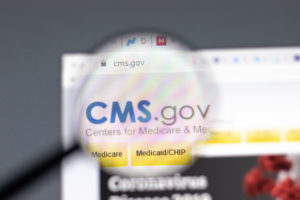Prepare for Medicare Open Enrollment with Your Doctor
If you’re 65 or turning 65, you might be missing out on important health benefits, and now’s the perfect time to evaluate your healthcare needs with your primary-care provider. Medicare’s Open Enrollment Period, also referred to as the Annual Enrollment Period runs from October 15 through December 7 and is the time you can join, switch, or drop a Medicare Health Plan or a Medicare Advantage Plan (Part C).
“Now, more than ever, it's extremely important to prioritize your healthcare,” explains Millennium Physician Group’s Chief Medical Officer Alejandro Perez-Trepichio. “When you’re with your primary-care provider, this is the time together to achieve that objective. Let’s work together. Let us help you achieve the best health possible.”
There are a lot of choices, and it can be confusing, but your primary-care provider knows your medical history better than anyone and should be one of your first stops when it comes to discussing your needs. Some of the top things to remember when preparing to take part in Open Enrollment are:
- Know the dates. You can’t start comparing actual costs until October 1, this is when the insurance companies unveil their plans for the coming year. Medicare’s Open Enrollment Period runs October 15 through December 7. This is when you can join, switch, or drop a Medicare Health Plan or a Medicare Advantage Plan (Part C).
- Know the network. Make sure your preferred doctors and hospitals are in your plan’s network. One of your first questions should be whether your primary-care provider and specialists are included in your plan. Don’t assume they are and don’t wait until after you’ve enrolled to check this. If your primary-care provider and specialist are not on your plan, you may end up paying higher out-of-network costs to see them. This may leave you having to choose a new primary-care provider or specialist.
- Learn the lingo. Understanding what terms like premium, co-insurance, and deductible mean can help you be more confident when comparing coverage and making decisions. The official Medicare website Medicare.gov has a complete and current list of Medicare terms and their meanings.
- Make an appointment to see your primary-care provider to discuss your healthcare priorities. Medicare plans center on preventive services, which is what your relationship with your primary-care provider is all about. Together, you can look at last year’s medical expenses and assess your prescription drug needs. (Most people don’t realize Original Medicare generally doesn’t cover prescription drugs.) Talk with your doctor about your individual healthcare needs and don’t base your Medicare decision solely on the monthly payment.
“It will be very important to go over all your medical conditions and make sure that we can manage all these conditions,” advises Dr. Perez-Trepichio. “Be sure to disclose everything. Having that close relationship with your primary-care physician is the first step to getting the best healthcare coverage for your specific needs.”
Your primary-care provider can let you know which plans they accept, discuss which you should consider based on your health history, and can refer you to educational materials or enrollment forms.
With so many options, we know Open Enrollment can be confusing. Remember, you do have a choice when it comes to Medicare coverage. If you’re a Millennium patient and have questions about your Medicare coverage, contact our Medicare Navigator Olivia Pierrelouis at Olivia.Pierrelouis@mpgus.com or 866.674.6880.
To make it easier to find the best plan for your needs, we’re working closely with our trusted partners at HealthShare360. Their Medicare advisors can help you understand your options.
- Call HealthShare360 at 239.744.7600
- Register for a free Medicare Informational Meeting


